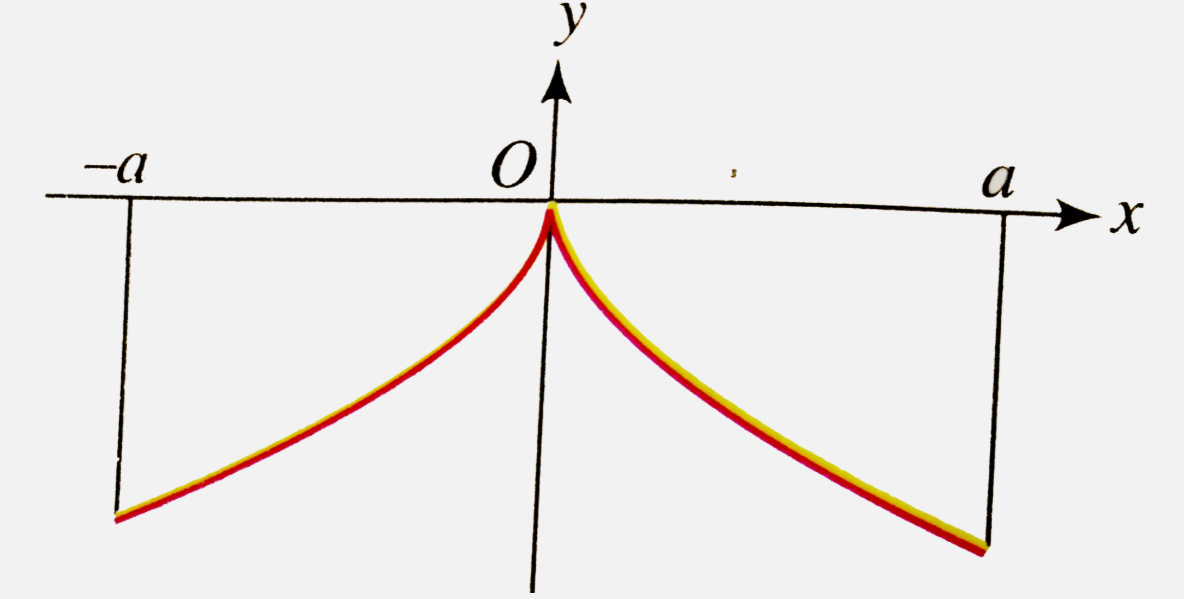Find the sum of roots the equation cos−1(cosx)=[x],[⋅] denotes the greatest integer funtions.
To solve the equation cos−1(cosx)=(x), where (x) denotes the greatest integer function, we will follow these steps:
Step 1: Understand the Function
The function cos−1(cosx) gives us the principal value of the angle x in the range (0,π). However, since the cosine function is periodic, we need to consider the periodic nature of cosine.
Step 2: Determine the Range of cos−1(cosx)
For any real number x, the value of cos−1(cosx) can be expressed as:
cos−1(cosx)={xif x∈(0,π)2π−xif x∈(π,2π)
This means that for x in the intervals (0,π) and (π,2π), we have different expressions for cos−1(cosx).
Step 3: Set Up the Equation
Now, we need to solve:
cos−1(cosx)=(x)
This implies we need to find values of x such that the left-hand side equals the greatest integer less than or equal to x.
Step 4: Analyze the Intervals
1. For x∈(0,π):
cos−1(cosx)=x
Thus, the equation becomes:
x=(x)
The only integer in this interval is 0 and 1 (since (x) can take values 0 or 1). So, the roots here are x=0 and x=1.
2. For x∈(π,2π):
cos−1(cosx)=2π−x
Thus, the equation becomes:
2π−x=(x)
Rearranging gives:
x+(x)=2π
Let (x)=n, where n is an integer. Then:
x+n=2π⟹x=2π−n
Here, n can take values 3 (since x must be in the interval (π,2π)). Thus, we have:
x=2π−3
Step 5: Collect the Roots
The roots we have found are:
- From (0,π): 0,1
- From (π,2π): 2π−3
Step 6: Calculate the Sum of Roots
Now, we sum the roots:
Sum of roots=0+1+(2π−3)=2π−2
Final Answer
Thus, the sum of the roots is:
2π−2
The function cos−1(cosx) gives us the principal value of the angle x in the range (0,π). However, since the cosine function is periodic, we need to consider the periodic nature of cosine.
For any real number x, the value of cos−1(cosx) can be expressed as:
cos−1(cosx)={xif x∈(0,π)2π−xif x∈(π,2π)
This means that for x in the intervals (0,π) and (π,2π), we have different expressions for cos−1(cosx).
Now, we need to solve:
cos−1(cosx)=(x)
This implies we need to find values of x such that the left-hand side equals the greatest integer less than or equal to x.
1. For x∈(0,π):
cos−1(cosx)=x
Thus, the equation becomes:
x=(x)
The only integer in this interval is 0 and 1 (since (x) can take values 0 or 1). So, the roots here are x=0 and x=1.
cos−1(cosx)=2π−x
Thus, the equation becomes:
2π−x=(x)
Rearranging gives:
x+(x)=2π
Let (x)=n, where n is an integer. Then:
x+n=2π⟹x=2π−n
Here, n can take values 3 (since x must be in the interval (π,2π)). Thus, we have:
x=2π−3
The roots we have found are:
- From (0,π): 0,1
- From (π,2π): 2π−3
Now, we sum the roots:
Sum of roots=0+1+(2π−3)=2π−2
Thus, the sum of the roots is:
2π−2
Topper's Solved these Questions
- GRAPH OF INVERSE TRIGONOMETRIC FUNCTIONSBOOK - CENGAGE ENGLISHCHAPTER - GRAPH OF INVERSE TRIGONOMETRIC FUNCTIONSEXERCISE - Exercises
18 Videos
- GETTING STARTED WITH GRAPHSBOOK - CENGAGE ENGLISHCHAPTER - GETTING STARTED WITH GRAPHSEXERCISE - Exercises 1.18
1 Video
- GRAPHICAL TRANSFORMATIONSBOOK - CENGAGE ENGLISHCHAPTER - GRAPHICAL TRANSFORMATIONSEXERCISE - ILLUSTRATION
78 Videos
Similar Questions
Draw the graph of y=tan−1x+cot−1x
View SolutionFollowing is the graph of y = f'(x) and f(0) = 0 .

(a) What type of function y = f'(x) is ? Odd or even?
(b) What type of function y = f(x) is ? Odd or even?
(c) What is the value of ∫a−af(x)dx?
(d) Has y = f(x) point of inflection?
(e) What is the nature of y = f(x)? Monotonic or non-monotonic?
View SolutionPlot y=|x|,y+x−2∣,andy=|x|2∣
View SolutionThe sum of roots of the equation cos−1(cosx)=[x],[.] denotes the greatest integer function, is 2π+3 (b) π+3 (c) π−3 (d) 2π−3
View SolutionEvaluate: (lim)x→0 sin[cosx]1+[cosx]([.] denotes the greatest integer function).
View SolutionLet 'a' denote the roots of equation cos(cos^(-1)x)+sin^(-1)sin((1+x^(2))/(2))=2sec^(-1)(sec x) then possible value of [|10a|] where [.] denotes the greatest integer function will be
View SolutionFind the sum of roots the equation cos−1(cosx)=[x],[⋅] denotes the greatest integer funtions.
View SolutionNumber of solutions of the equation cos[x]=e2x−1,x∈[0,2π], where[.] denotes the greatest integer function is
View SolutionThe sum of the roots of the equation cos−1(cosx)=[x]. where [x] denotes greatest integer function, is
View SolutionFind the number of solution of the equations
|cosx|=[x], (where [.] denotes the greatest integer function ).
View SolutionFind the period of the functions (where [ * ] denotes greatest integer function)
f(x)=11−cosx
View SolutionNumber of solutions of the equation cos[x]=e2x−1,x∈[0,2π], where[.] denotes the greatest integer function is
View SolutionFind the number of solution of the equations
|cosx|=[x], (where [.] denotes the greatest integer function ).
View SolutionFind the domain and range of f(x)=log[cos|x|+12],where [.] denotes the greatest integer function.
View SolutionNumber of solutions of the equation cos[x]=e2x−1,x∈[0,2π], where[.] denotes the greatest integer function is
View Solution

